Nottingham - The Castle
w/e 26 September 2004
All this week's pictures were taken
with a Kodak DX6490
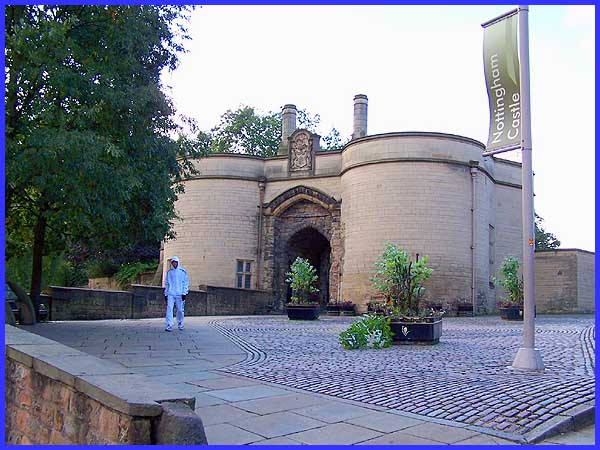
Nottingham Castle stands on top of a 130 foot high sandstone
outcrop above the River Trent, near to the city centre and was
one of the foremost castles in Norman England. Originally built
as a wooden structure after the Battle of Hastings (1066) the
typical Norman motte and bailey design was added to in the 12th
century when it is thought the stone walls were added. The gatehouse,
although extensively restored in Victorian times, dates mostly
from the 14th century and is now home the castle shop.
|

The castle has had something of a chequered history and visitors
passing through the gatehouse will be surprised if they are expecting
to see the castle of Robin Hood and the Hollywood film makers.
An information board just inside the entrance provides a potted
history and the image above has been stitched together from three
pictures. To view a larger image (249kb) and read the history,
click
here or the image above.
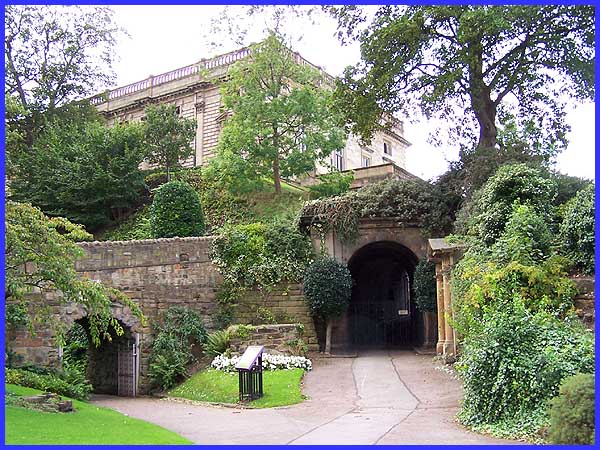
The history of the castle reveals that it was in a state of "dekay
and ruyne" during the 16th century and that it was demolished
to be replaced by a mansion built for the Duke of Newcastle towards
the end of the 17th. Gutted by fire in the 1830s, the shell remains
today and is seen here above the earlier middle bailey bridge.
Originally there was a wooden drawbridge here that could be let
down between stone piers. but this has now been replaced by the
stone arch.
|
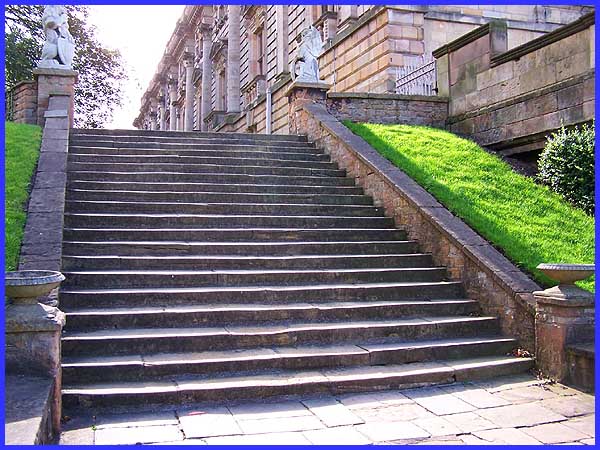
 There are several ways up to the
present castle, one of them by these steps. This picture was
taken from half way up between the two flights where words painted
on the stone slabs tell us that the steps are 400 years old.
There are a number of these painted messages all around the castle
with little gems of information aimed mainly I suspect, at the
many children who visit. There are several ways up to the
present castle, one of them by these steps. This picture was
taken from half way up between the two flights where words painted
on the stone slabs tell us that the steps are 400 years old.
There are a number of these painted messages all around the castle
with little gems of information aimed mainly I suspect, at the
many children who visit.
|
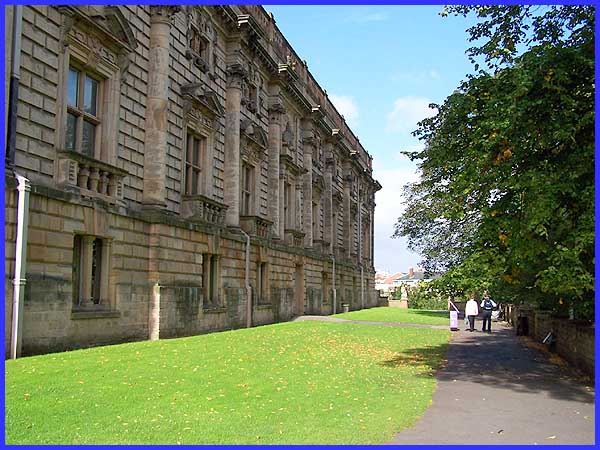
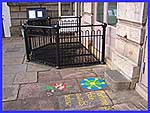 The steps
lead to this terrace - this is looking back towards the top of
the steps. Around the corner from here, another of those painted
messages states "Mortimer's Hole awaits below" which
can be seen over the iron railings (right). This is an ancient
300 foot passageway leading down through the sandstone to Brewhouse
Yard below the castle. It is through this tunnel in 1330 that
supporters of the young King Edward III gained access to the
castle to seize Roger Mortimer, lover of his mother Queen Isabella,
and murderer of his father Edward II. Mortimer was hanged, drawn
and quartered in London and his remains left on the traitors
gate at Tyburn but his name lives on for posterity in the tunnel
beneath the castle. The steps
lead to this terrace - this is looking back towards the top of
the steps. Around the corner from here, another of those painted
messages states "Mortimer's Hole awaits below" which
can be seen over the iron railings (right). This is an ancient
300 foot passageway leading down through the sandstone to Brewhouse
Yard below the castle. It is through this tunnel in 1330 that
supporters of the young King Edward III gained access to the
castle to seize Roger Mortimer, lover of his mother Queen Isabella,
and murderer of his father Edward II. Mortimer was hanged, drawn
and quartered in London and his remains left on the traitors
gate at Tyburn but his name lives on for posterity in the tunnel
beneath the castle.
|
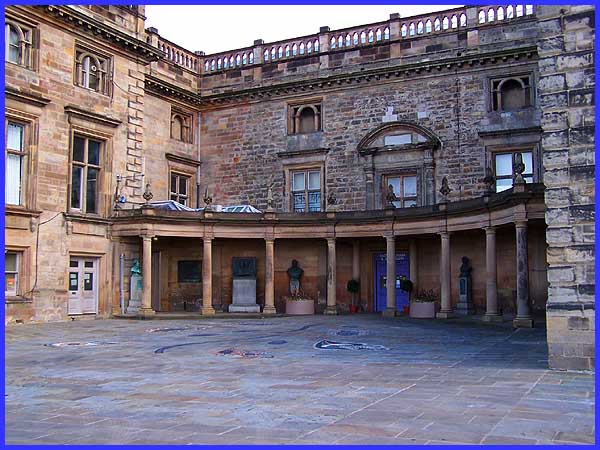
At one time it was possible to walk around the end of the building
to the other side but this is now barricaded probably due to
the state of the sandstone cliff so to reach the other side of
the building we have to retrace our steps to reach the other
side. Here we find the entrance to the Castle Museum and Art
Gallery and also to the Sherwood Foresters Regimental Collection.
The building was acquired in 1875 and restored to become the
country's first provincial museum of fine art.
|
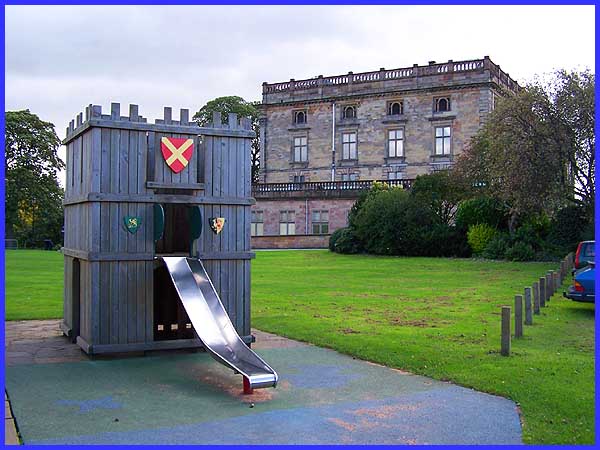
An annual Robin Hood Pageant is held at the castle where jousting,
real ale, a hog roast, comic re-enactments, workshops, live music,
minstrels, jesters and jugglers are just a few of the attractions
on the green. All year round attractions for children include
this slide in the shape of a castle so in this view we get two
castles for the price of one. And talking of price, admission
to the castle and museum is free on weekdays but a charge is
made at weekends.
|

